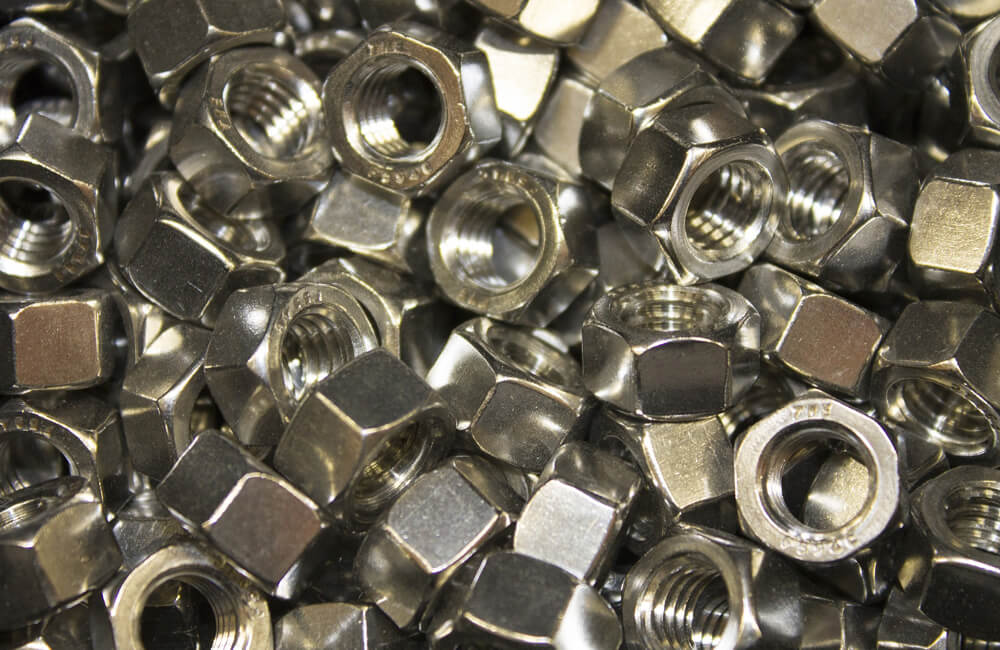Stainless Steel Fasteners for solar mounting systems play an important role in ensuring the system runs securely and stably. But what type of stainless steel is used: 304, 316, or 410? There will be a comprehensive guide for you.
Stainless steel is an alloy which contains at least 10.5% chromium in its composition, although many grades contain more. Chromium is the key component providing stainless steel with unique anti-corrosion and anti-stain characteristics. When exposed to air, chromium reacts with oxygen to form a thin, protective oxide layer on the steel surface. This layer prevents rusting and offers a certain degree of corrosion resistance.
Stainless steel may also include other alloying elements like nickel, molybdenum, and nitrogen to enhance specific properties like strength, formability, and resistance to various types of corrosion. Because of these attributes, stainless steel is widely used in a lot of applications, such as kitchen appliances, utensils, building materials, industrial equipment, and medical devices. This makes it an important material for fasteners in solar energy installation systems.
Stainless steel comes in various types, including austenitic, martensitic, and ferritic. Well-known grades include 304, 316/316L, and 410. Each type has its own set of attributes and is suited for specific applications. The type of stainless steel used for a project depends on several factors, including the corrosive environment, temperature, and mechanical stress it will face.

300 Series
The 300 series, also known as austenitic, is the most common type and usually contains 18% chromium and 8% nickel (often referred to as 18/8). These steels are famous for their excellent formability and corrosion resistance, and they are generally non-magnetic. They are also flexible and cold-hardened but cannot undergo heat treatment.
Type 304 is the most widely used in the 300 series, having better thread strength than 302, which helps in fastener installation. Because it can’t undergo heat treatment, most solar energy 304 stainless steel fasteners are self-tapping. When used for steel applications, they must be equipped with a carbon steel drill tip for easier drilling.
400 Series
The 400 series, known as martensitic, mainly consists of straight chromium. It has moderate properties and can resist corrosion in the environment. Compared to the 300 series, it can undergo heat treatment, forming additional strength. They are also magnetic and gain good strength through heat treatment.
The most commonly used for solar fasteners is 410 stainless steel. This grade is widely produced for self-drilling fasteners. For outdoor construction, applying some sort of coating to this 410 stainless steel fastener is common practice. This improves its corrosion resistance and provides lubrication to improve drilling and threading.
Various factors contribute to a corrosive environment, such as high temperature, humidity, climate, chemicals, microorganisms, plants, etc. Therefore, choosing which type of stainless steel to use in solar installations is not straightforward. Common practices suggest:
304 Stainless Steel
- The most commonly used type. It has corrosion-resistant properties in typical food-processing construction environments involving high temperatures, acids, and chlorides. It can also resist organic and inorganic chemicals and dyes.
- Low carbon variant 304L can resist the corrosive action of nitric acid well. It can also resist sulfuric acid corrosion under moderate temperatures and concentration.
- Another variant, 304N, can be used in low-temperature equipment, household appliances, kitchen equipment, medical equipment, and sewage treatment, among other related scenarios.
316/316L Stainless Steel
Compared to type 304, 316 stainless steel contains an additional 2-3% molybdenum. Molybdenum enhances resistance to chlorides and other forms of corrosion. Therefore, it is more suitable for marine environments, coastal areas, chemical processing, and high-chlorine environments. Naturally, it is more expensive than 304 regarding material and manufacturing.
410 Stainless Steel
Contains about 11.5-13.5% chromium and 0.08-0.15% carbon, with almost no nickel content. Higher carbon content helps it form a martensitic structure, thus having better hardness. However, it has poorer corrosion resistance compared to the other two grades. It is generally cheaper than 304 and 316 stainless steel, mainly because it doesn’t contain the more expensive element nickel.
Commonly used in applications requiring high strength, hardness, and moderate corrosion resistance. These include knives, dental and surgical instruments, nozzles, valve parts, hardened steel balls and seats, and fasteners.
Stainless Steel Testing
For stainless steel testing, more professionals use ASTM G-4 to perform tests to ultimately determine the most reliable material. The test should include conditions during both operation and downtime. For instance, sulfuric acid and corresponding polymers formed during some downtime processes might be more corrosive than the process itself. Tests should be performed under the worst operating conditions.”
It is a comprehensive guide on the types of stainless steel used in solar energy installation systems, particularly on grades 304, 316, and 410. Their chemical composition, properties, and applications emphasize the importance of choosing the right grade based on environmental factors and stresses. Testing standards like ASTM G-4 are crucial for final material selection. These may help you choose and inspect the stainless steel fasteners better.
















